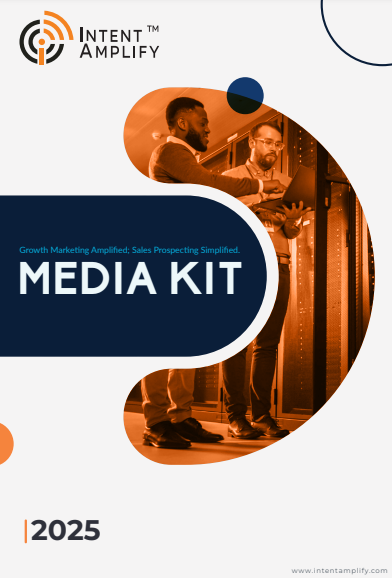
B2B Content Syndication with Intent Data: What It Is and How It Drives Results
- Last updated on: July 16, 2025
B2B content syndication is the need of the hour in this industry.
The age-old mass outreach strategy is losing its luster. Marketers have long relied on traditional content syndication to cast a wide net, pushing whitepapers, guides, and reports to large lists with the hope of capturing interest. But strategy is a completely different ball game than hope.
When buyers are saturated with content and more self-directed in their path, in an age where reach is less important than relevance, precision has become the new currency of successful demand generation.
Come in, intent-based content syndication, the intelligent, cost-cutting alternative that turns the old model on its head. Rather than broadcasting to a large, anonymous group, it begins by determining who is already in-market and providing content specifically targeted to their precise needs and position in the buying cycle.
This article delves into the strategic move towards intent-driven syndication, dissects how it works, and offers step-by-step instructions for launching a program that consistently generates a quality pipeline and significant ROI.
Precision Over Volume: The Case for Intent-Driven Content Syndication
The primary issue with classic syndication is misalignment. You’re publishing content to an audience of prospective leads without any genuine understanding of their immediate needs, interests, or buying schedule. Sure, this can create leads, but it usually leads to low engagement, wasted investment, and inflated pipelines that don’t convert.
Intent-driven syndication shifts the paradigm.
Rather than pursuing mere quantities, this model targets reaching the appropriate buyers at the appropriate time, those researching your category actively, consuming competitor content, or demonstrating indications of readiness to buy. It enables:
- Increased rates of engagement by aligning content with buyer interest and stage.
- Enhanced lead quality through filtering contacts to known in-market accounts.
- Accelerated sales cycles by engaging buyers already in research mode.
- Fewer costs per opportunity via less waste in audience targeting.
This isn’t merely a tactical enhancement; it’s a strategic adjustment to the way B2B buyers are behaving today. It gets content in front of decision-makers when they’re most open to it, not interrupting them when they’re not ready.
How to Build an Intent-Based Content Syndication Strategy
This approach does not point to overhauling your entire demand generation engine. But it does require deliberate planning, reliable data sources, and close coordination between marketing and sales.
Here’s a structured roadmap to help you build a high-performance intent-based content syndication strategy.
1. Know Exactly Who You’re Talking To
The foundation of any high-performing B2B campaign is precision targeting. That starts with clearly defining your Ideal Customer Profile (ICP), but not stopping there.
Think beyond surface-level attributes like industry or company size. Dig into:
- Where your solution creates the most value (specific verticals or business models)
- Revenue thresholds and team sizes that align with your offering
- Technology ecosystems your product integrates with
Trigger events: new funding, new leadership, plans for expansion, or regulatory requirements
No less critical is knowing the entire decision-making team. B2B purchases often include several stakeholders with disparate priorities. Know who drives the deal, technical reviewers, business sponsors, finance influencers, and ultimate approvers, and craft your approach to the requirements of each role.
When you talk to actual people, not just job titles, your content stands a better chance of breaking through.
2. Select Content That Resonates with an Educated Buyer
When you’re working with accounts that are already demonstrating buying signals, generic learning content is not going to make the cut. You’re not starting from square one; you’re catching up on a conversation that’s already in progress.
This is where mid-to-late funnel content makes the biggest difference. Lead with assets like:
- Independent analyst reports or product comparisons.
- Case studies demonstrating performance in the buyer’s industry.
- ROI models or cost justification tools.
- Strategic briefs for the C-suite.
- On-demand demos or expert webinars that emphasize differentiation.
Gartner defines the notion of buyer enablement—providing content that helps support the buyer jobs such as solution discovery or supplier choice. Buyers who receive helpful content are 2.8× more likely to find it easy to make their purchase and 3× more likely to make bigger purchases without regret
The objective is to cut friction. Provide your audience with what they require to consider you more seriously, and decrease the interval between consideration and decision.
3. Identify the Right Accounts Using Intent Signals
Intent data moves your attention away from general targeting and towards actual purchasing behavior. Tools such as Intent Amplify and G2, monitor online signals that show a business is, in fact, looking at your space for real topics searched for, interactions with content from competitors, or new surges of interest around important themes.
When used properly, these tools enable you to target accounts ready for further contact. You’re not throwing out a big net, you’re finding where the fish are already biting.
Combine these insights with your ICP to create intelligent segments that balance both fit and interest. That’s where the magic occurs.
4. Select Syndication Partners That Provide Quality, Not Quantity
Intent data is only worth it if it’s triggered properly—and that’s where your syndication vendors enter the picture.
Seek out partners that do more than simple lead delivery. Your ideal vendors should be able to:
- Target accounts on the basis of timely intent signals, rather than static lists
- Filter by role or function, rather than job title keywords
- Pledge to deliver leads that pass your qualification standards
- Deliver transparent, timely reporting so you can determine campaign ROI
As revnew suggests, “Effective content syndication is about quality, not quantity,” especially when targeting high-intent, high-value audiences.”
Test long-term agreements before you sign them. Test a short campaign and measure not only the quantity of leads but who is actually interacting, how far they advance, and if they convert to pipeline. Quality partners will appreciate that kind of scrutiny.
5. Get a Game Plan for Lead Management
When the leads begin flowing, the work really starts. You want a clean process to sort, score, and move on them.
Begin by creating a lead scoring model that mirrors actual buying behavior. Consider:
- The amount of content they consumed and what kind
- How recently did they interact
- Whether the activity indicates early investigation or late-stage consideration
Next, automate your response:
- Send high-score leads straight to sales
- Put mid-level leads into targeted nurture streams
- Send lower-fit contacts into long-term programs for reactivation
Most notably, get your sales team involved early. Ask them what is converting and what isn’t. Use that information to hone your scoring model and bridge the gap between revenue and marketing.
6. Track What It Matters: To Be Prepared to Tweak
Great marketers don’t just create campaigns they quantify them. But to optimize performance truly, you must examine the metrics that indicate real business impact.
Pay attention to:
- How many leads are turning into qualified opportunities
- Buying group engagement trends in major accounts
- Pipeline contribution, deal velocity, and win rates
They inform you not only about whether your content is being ingested, but also if it’s creating legitimate movement along the funnel.
Establish a shared dashboard for each for marketing and sales to review on a regular basis. Make it a living strategy document, not a post-mortem report.
And keep this in mind: intent data is not static. Buyer intent changes, market conditions shift, and messaging needs to change. The most effective teams approach intent-based syndication as an ongoing process, not a one-time strategy.
Final Thoughts: The Future of Content Syndication is Intent-Led
As B2B marketing continues to evolve, so must our approach to engagement. Traditional content syndication, while still useful in specific contexts, falls short in today’s climate of heightened buyer expectations and longer, more complex sales cycles.
Intent-driven syndication offers a compelling alternative. It’s more efficient, more scalable, and better aligned with how modern B2B buyers research, compare, and decide. When powered by accurate data, high-quality content, and the right partners, it becomes a revenue engine, not just a lead-gen tactic.
For marketers seeking to build pipelines with precision, not just presence, this shift isn’t optional. It’s inevitable.
FAQs
1. How can I measure the effectiveness of personalized B2B marketing?
Monitor metrics that indicate authentic engagement and funnel advancement: MQL-to-SQL conversion percentages, opportunity creation, velocity of deals, and influenced pipeline. Contrast these with non-personalized campaigns to gauge lift. In addition, gather qualitative feedback from the sales team regarding lead quality and depth of engagement.
2. Are ABM and B2B marketing the same?
Not exactly. ABM is a high-value account targeting strategy with a coordinated sales and marketing strategy. Personalization is a technique employed within ABM and in other campaigns to present customized experiences. Consider personalization as an integral component of ABM, but not exclusive to it.
3. Can small-sized marketing teams also personalize their B2B campaigns?
Definitely. Begin small—break up your audience by company type or job function, and tailor messaging accordingly. Utilize tools that personalize on the basis of engagement behavior or firmographics. Dozens of segments are not required in order to see an effect; even plain personalization will beat generic campaigns.
4. What are a few examples of effective personalized B2B campaigns?
Examples are account-specific landing pages, job role or behavior-based email sequences, individualized webinar invitations, and dynamic website content that adapts depending on industry or company size. A great example would be a case study delivered to a prospect from their own vertical with message alignment against their known pain points.
5. Why does personalization matter so much in B2B today?
Because relevance is what today’s B2B buyers demand. They’re researching and interacting on multiple channels before they ever speak to sales. Your marketing message had better mirror their particular challenges and interests, or it will go unnoticed. Personalization enables trust-building and value delivery from the initial touch.



